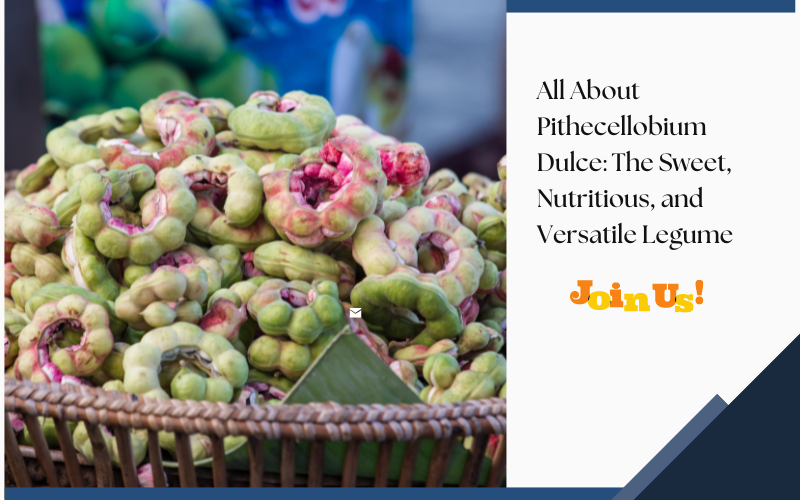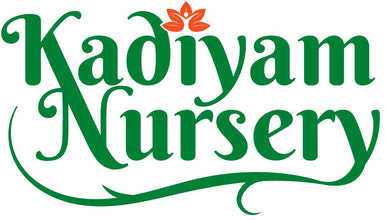
All About Pithecellobium Dulce: The Sweet, Nutritious, and Versatile Legume
Pithecellobium dulce, also known as Manila tamarind or Madras thorn, is a legume tree native to Mexico and Central America. It is a popular food crop in tropical regions, known for its sweet and tangy taste, as well as its high nutritional value. In this guide, we'll take a closer look at the many benefits of Pithecellobium dulce, and how to use it in cooking and gardening.
What is Pithecellobium dulce and where does it come from?
Pithecellobium dulce is a species of flowering tree in the pea family, native to Central America, Mexico and the Caribbean. Commonly known as "Madras thorn" or "sweet tamarind", it is grown for its sweet-tasting pods, which are used in a variety of culinary applications. It is also used as an ornamental plant and as a traditional medicine in some cultures.
Nutritional benefits of Pithecellobium dulce
Pithecellobium dulce, also known as "Madras thorn" or "sweet tamarind," is a source of several essential nutrients. The pods of the tree contain high levels of carbohydrates, which provide energy to the body. They also contain a moderate amount of protein, fiber, and vitamins such as vitamin C and B vitamins. Additionally, the pods contain minerals such as calcium, potassium, and iron.
The leaves of the tree have also been used in traditional medicine and they are known to have anti-inflammatory, antioxidant, and antimicrobial properties.
However, it is worth noting that more research is needed to fully understand the nutritional benefits and medicinal properties of Pithecellobium dulce. It is recommended to consult with a medical professional before using it as a dietary supplement.
How to cook and use Pithecellobium dulce in different dishes
Pithecellobium dulce, also known as "Madras thorn" or "sweet tamarind," is commonly used in both sweet and savory dishes. The pods can be eaten fresh, dried, or made into a paste.
Here are a few ways to use Pithecellobium dulce in different dishes:
-
Fresh pods: The fresh pods can be eaten as a snack or used to make a sweet and tangy relish. Simply remove the seeds and mash the pods with a little sugar and salt.
-
Dried pods: The dried pods can be ground into a powder and used as a flavoring for sweet and savory dishes. They can also be soaked in water and then mashed to make a paste.
-
Sweet tamarind drink: Dried pods can be soaked in water overnight to make a sweet tamarind drink. Simply mix the soaked pods with a little sugar and water to make a sweet and tangy drink.
-
Sweet tamarind chutney : soaked Tamarind mixed with jaggery and blend it with other ingredients like ginger, green chilli, salt.
-
Tamarind sauce: Pithecellobium dulce can be used to make a sweet and tangy tamarind sauce that can be used as a marinade or dipping sauce for meats and vegetables.
-
Curry: Tamarind paste can be used in different curries to give them a tangy taste and to balance the flavors.
-
Deserts: Tamarind paste can be used in different desserts like ice cream, Jams, etc.
It's worth noting that Pithecellobium dulce is quite versatile, and you can experiment with different ways to use it in your cooking.
The ecological benefits of growing Pithecellobium dulce
Pithecellobium dulce, also known as "Madras thorn" or "sweet tamarind," has several ecological benefits when grown in an appropriate environment. Some of the benefits include:
-
Soil improvement: The tree is known to fix nitrogen in the soil, which can improve soil fertility and help other plants to grow.
-
Carbon sequestration: The tree is a good carbon sink and can help to reduce greenhouse gas emissions.
-
Biodiversity: The tree provides food and habitat for a variety of wildlife, including birds, insects, and mammals.
-
Drought tolerance: The tree is drought-tolerant and can survive in areas with low rainfall.
-
Reforestation: The tree can be used for reforestation efforts in areas where natural forests have been degraded or destroyed.
-
Erosion Control: The tree has deep roots that can help to prevent soil erosion and reduce the impact of floods.
-
Economic benefits: The tree provides a source of income and food for local communities, and can be used to make a variety of products, including wood, fruit, and medicine.
It is worth noting that when growing Pithecellobium dulce, it is important to consider the local environmental conditions and the potential impact on other plants and animals. It should be grown in appropriate location, and in a way that is sustainable and does not harm the environment.
Potential health concerns and precautions when consuming Pithecellobium dulce
While Pithecellobium dulce (Madras thorn or sweet tamarind) is generally considered safe to consume, there are some potential health concerns and precautions to be aware of.
-
Allergic reactions: Some people may be allergic to Pithecellobium dulce, and consuming it may cause symptoms such as itching, hives, or difficulty breathing.
-
Interaction with medications: Pithecellobium dulce may interact with certain medications, such as blood thinners, and could potentially increase the risk of bleeding.
-
Pregnancy and breastfeeding: It is not recommended for pregnant or breastfeeding women to consume large amounts of Pithecellobium dulce, as the effects on these groups have not been well studied.
-
High sugar content: Pithecellobium dulce contains a high amount of natural sugars, it is important to monitor the amount of intake, particularly for people who have diabetes or are trying to lose weight.
-
Consuming in large quantity: Consuming large amounts of Pithecellobium dulce may cause stomach upset and diarrhea.
It is always recommended to consult with a healthcare professional before consuming Pithecellobium dulce, especially if you have any underlying health conditions or are taking any medications.
Conclusion and overall recommendations for incorporating Pithecellobium dulce into your diet.
Pithecellobium dulce, also known as "Madras thorn" or "sweet tamarind," is a versatile and nutritious food that can be incorporated into a variety of dishes. It is a good source of carbohydrates, protein, fiber, vitamins, and minerals, and has been used in traditional medicine for its anti-inflammatory, antioxidant, and antimicrobial properties.
However, there are also some potential health concerns and precautions to be aware of when consuming Pithecellobium dulce. It is important to consume it in moderation and to consult with a healthcare professional before consuming it, especially if you have any underlying health conditions or are taking any medications.
When growing Pithecellobium dulce, it is important to consider the local environmental conditions and the potential impact on other plants and animals. It should be grown in an appropriate location and in a way that is sustainable and does not harm the environment.
In conclusion, Pithecellobium dulce is a nutritious and flavorful food that can be used in a variety of dishes, it has many ecological benefits, but it's important to be aware of potential health concerns and to consume it in moderation. It's always recommended to consult with a healthcare professional before adding it to your diet.

Leave a comment